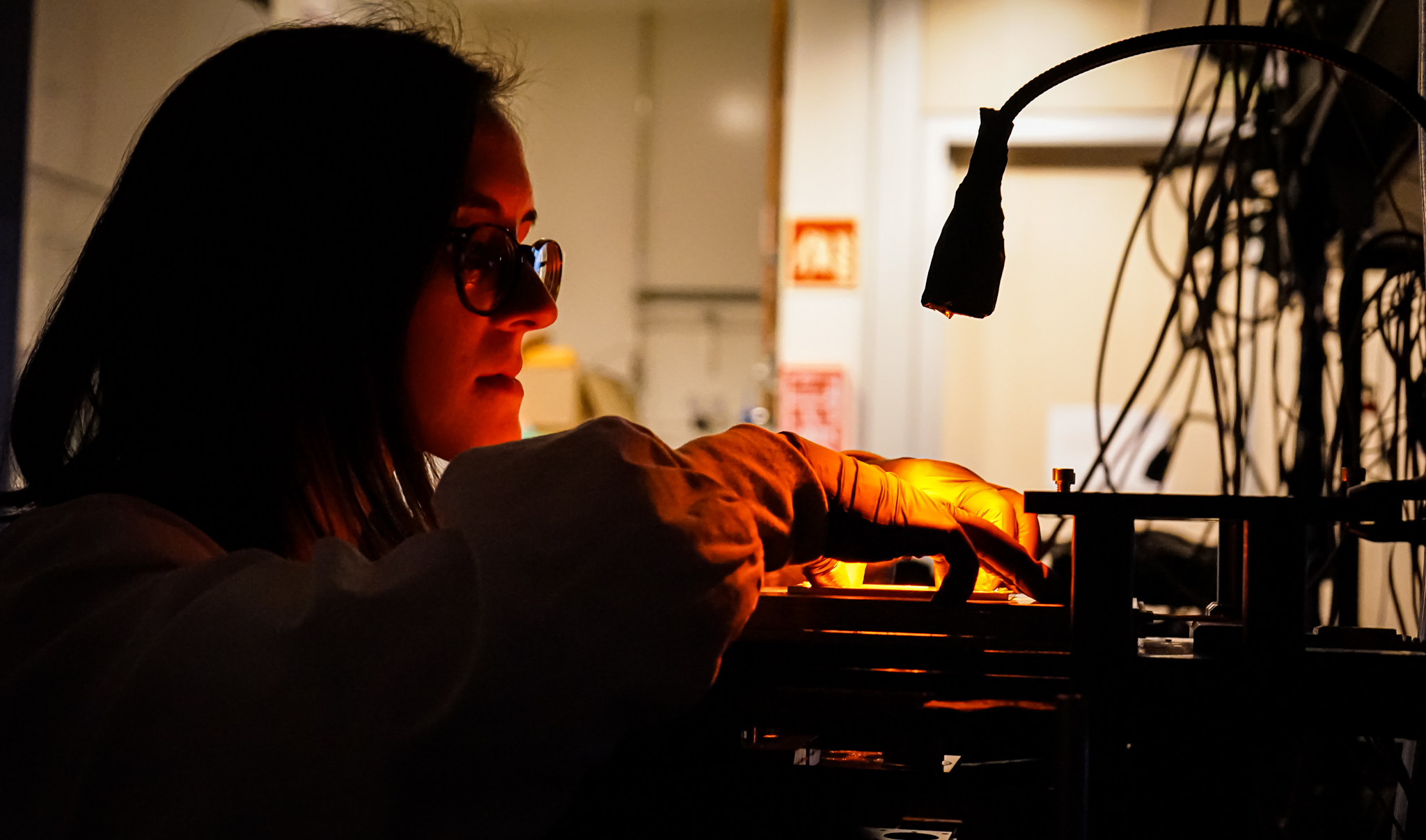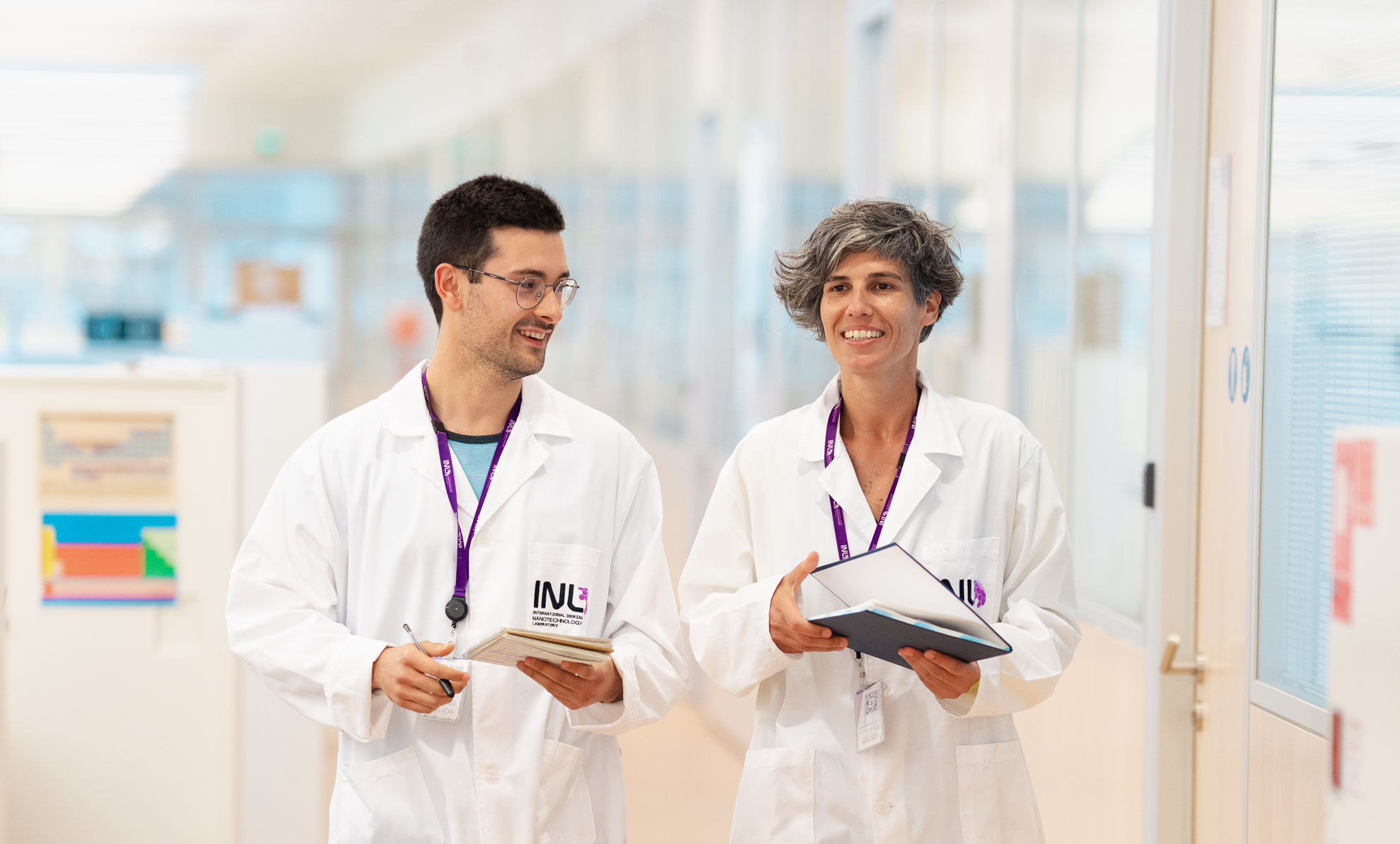
Wrapping Up 2023: Research
December 27, 2023
2023 has been a busy year for the INL Community. This week we take a look at some of this year’s highlights and achievements regarding our projects, and the latest research developments.
Even with all the changes, INL persisted in performing interdisciplinary research and deploying and articulating nanotechnology for the benefit of society addressing society’s grand challenges. Here’s a comprehensive wrap-up of the key moments that defined the past 12 months.
INL inaugurates state-of-the-art Cryo-Electron Microscope that helps to study new diseases
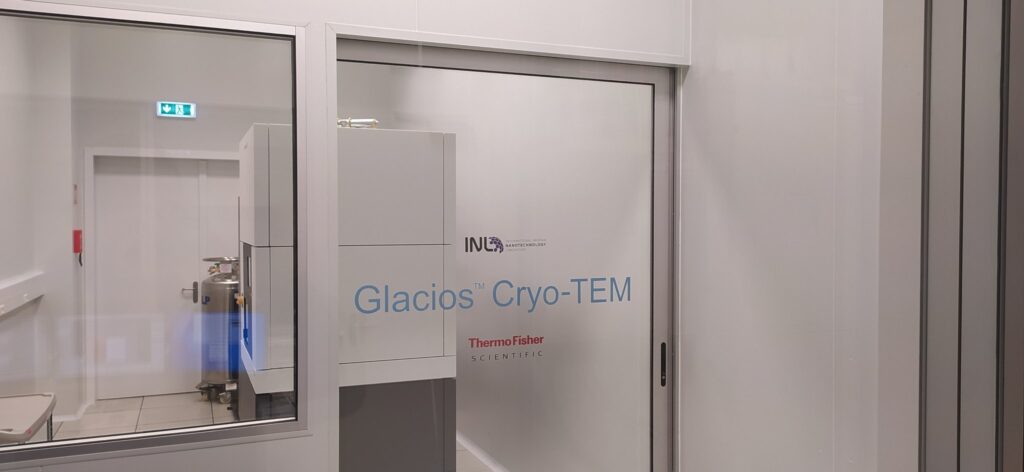
Analysing biostructures down to the atomic level can help to study diseases such as Alzheimer’s or cancer, as well as to develop new therapies. This new type of investigation is now possible from Braga, thanks to the new electronic cryogenic microscope installed at INL – International Iberian Nanotechnology Laboratory. The acquisition of this equipment is part of the creation of the CryoEM-PT National Network, “an electron microscopy network for life and health sciences”, explains Paulo Ferreira, scientific coordinator of this initiative that opens doors to researchers and companies in Iberia, allowing easy access to state-of-the-art infrastructure and technologies. Read the full update >>
ATLANTICLAM, brings Euro-native clam species from ‘farm to fork’
INL – International Iberian Nanotechnology Laboratory partners with Oceano Fresco – the project promoter – and the Faculty of Biotechnology of Universidade Católica Portuguesa, Nofima, and Maritech. This unique consortium will strengthen both bilateral relations and international cooperation between Portugal and Norway, sharing know-how and disseminating knowledge across borders. Read the full update >>
The Nanofabrication for Optoelectronic Applications research group at INL together with a vast consortium recently published a new study where they demonstrate that both large-area and flexible processing of ultrathin CIGS solar cells is possible. Read the full update >>
The Clean Energy cluster at INL – International Iberian Nanotechnology Laboratory has different activities within the photovoltaics programme: developing novel materials and processes to improve the performance of solar cells – such as low-weight, flexible materials, and low-cost methodologies; enhancing photovoltaics by integrating new solar cell architectures with different micro- and nano-structures; expanding the photovoltaics use-cases such as developing agrivoltaics and neural networks/artificial intelligence for asset management. Read the full update >>
ChipAI Neuromorphic System Simulator
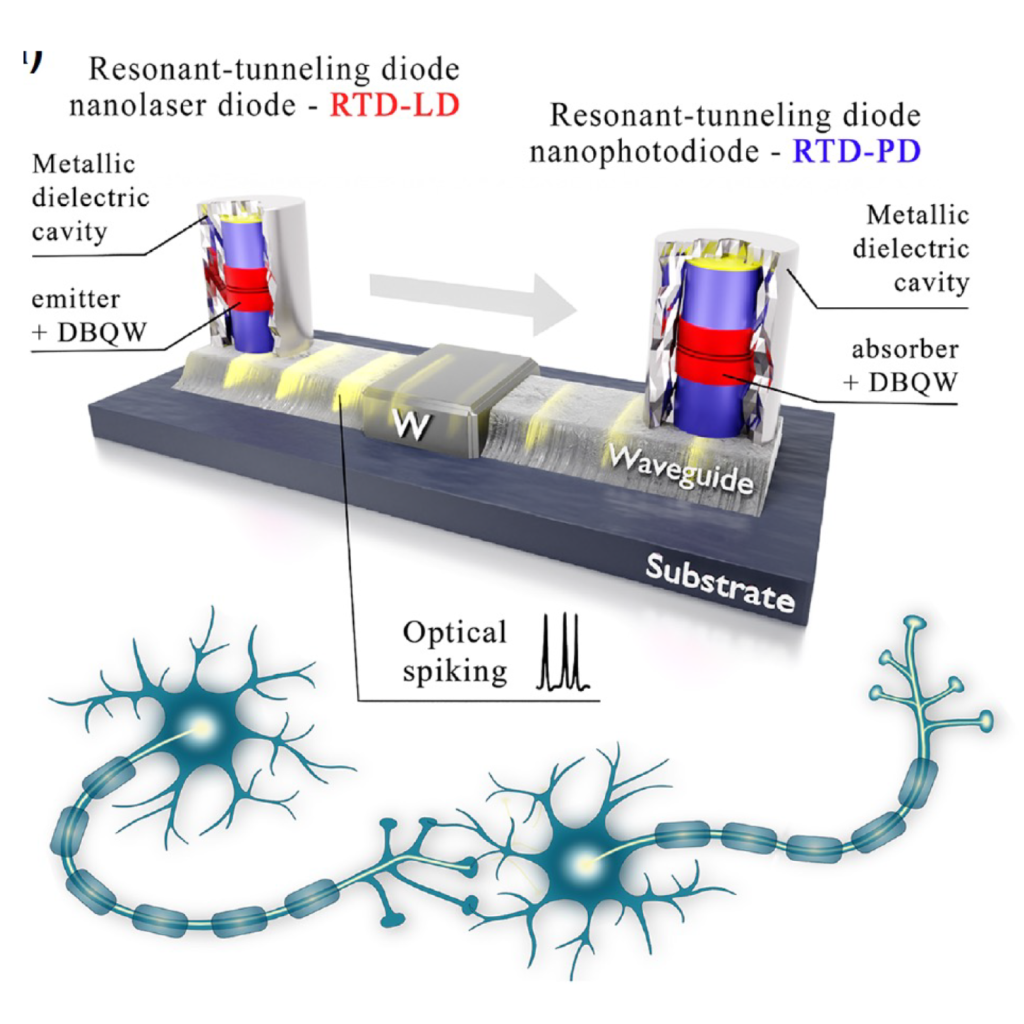
In the framework of the ChipAI project, a collection of three apps that simulate the dynamics of neuromorphic nanophotonic devices was developed. The app is intended for users interested in simulating the generation and transmission of excitable optical pulses in artificial nano-optoelectronic spiking neurons. The apps are available on the ChipAI project website and are to be used by other researchers/stakeholders to have an understanding of how optical pulses (spikes) are generated in these systems, and how these are affected by the systems’ parameters and hardware specifications. Read the full update >>
A new nanofabrication method for high-efficiency polarizers
INL – International Iberian Nanotechnology Laboratory researchers developed a new nanofabrication method for high-efficiency polarizers using small-sized wires (1 µm), a double-wire grid configuration, and transparent substrates. Alexandre Chícharo, Research Engineer at INL, explains that “new materials such as cyclic olefin copolymer (COC) have much higher transmittance (as high as 90%), resulting in ultra-transparent polarizers. In addition, the double-wire grid configuration presents a much higher performance in obtaining polarized THz when compared to a single plane of wires”. Read the full update >>
INL researchers develop a novel compact and low-cost microLED chip
In this recent work, INL researchers in collaboration with the University of Lisbon, present a novel microLED chip that does not need p-type semiconductor layers. Furthermore, the developed microLED also has the astounding ability to work as both a light emitter and a detector, in the same circuit. Bruno Romeira, the leader of this study, explains that “the architecture of the device provides a compact and low-cost microLED chip with seamless integration of multi-capabilities (electroluminescence, photoresponse and negative differential conductance – electrical on-chip gain), under identical operating forward voltage conditions”. Read the full update >>
INL researchers develop an automated monitoring system for toxins found in drinking water
INL researchers have developed an automated monitoring system for total microcystin-LR. This monitoring system has dedicated modules for sample preparation and toxin detection, it is powered by a battery (able to work without an operator for 4 weeks), it has very high sensitivity and it is remotely accessible through a cloud platform. Read the full update >>
INL – International Iberian Nanotechnology Laboratory researchers developed a fully integrated platform for DNA-based analysis with interesting applications for food authenticity and for the detection of foodborne pathogens and allergenic ingredients. Read the full update >>
INL develops new mechanisms to improve sensitivity and noise reduction in accelerometers
INL researchers have developed a new mechanism to improve sensitivity and noise reduction in accelerometers. More specifically, the electronic readout is typically the bottleneck that limits sensitivity/resolution in accelerometers using capacitive transduction (the commonly used mechanism). With the prototype developed at INL, researchers are using their expertise in Micro Electronic Mechanical Systems, known as MEMS structures, to increase the accuracy of accelerometers. Read the full update >>
INL researchers develop a new model to predict the toxicity of nanomaterials
Researchers from the Nanosafety research group at INL are innovating and using in silico experiments to predict the toxicity of engineered nanomaterials – i.e., these toxicity studies can be performed using an artificial intelligence-assisted and data-driven framework. João Meneses, the leading author of this study, explains “We developed a machine learning model to predict the potential human lung cell toxicity induced by metal oxide nanoparticles exposure”. Read the full update >>
Revolutionising optical systems: INL’s cutting-edge micro-mirror technology
INL researchers, in collaboration with the University of Minho and Bosch, have developed ground-breaking 1D and 2D micro-mirror technology using state-of-the-art MEMS (Micro Electronic Mechanical Systems) silicon-on-insulator (SOI)-based bulk micromachining. Impressively, neither complex bonding processes nor piezoelectric materials are needed to fabricate these mirrors, paving the way for more efficient and cost-effective solutions. Read the full update >>
INL’s microfluidic chip enables earlier diagnosis and personalised treatment
The Medical Devices research group at INL has pioneered a microfluidic system that holds the potential to transform the way we understand and fight cancer. This pioneering microfluidic chip marks a paradigm shift. Read the full update >>
INL researchers are working on a novel approach to fight a common disease in pigs
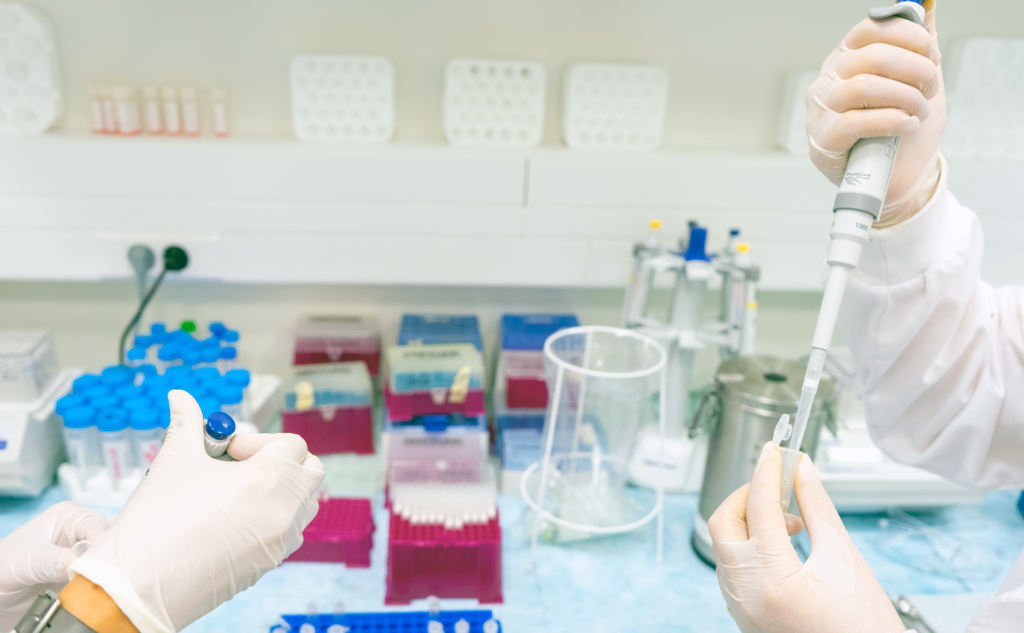
The project APTAcoli aims to develop a novel approach to fight a common disease that affects young pigs – enteric colibacillosis. This disease is caused by certain strains of Escherichia coli that attach to the small intestine and produce harmful toxins. These toxins lead to diarrhoea, dehydration, and acidosis. Read the full update >>
Spintronics for neuromorphic computing: a breakthrough in energy-efficient information processing
In a recently published paper, the Spintronics research group describes a spintronic circuit as a basic programmable computing unit for neuromorphic computing. This circuit connects multiple spintronic devices with different functionalities in one circuit using a single fabrication process, which paves ways to fabricate complex neuromorphic computing systems. Read the full update >>
Matryoshka-like MEMS accelerometer
Researchers at INL have recently published a study introducing a micromachining technique to create complex MEMS structures for multi-axis sensing. The developed sensor uses a capacitive open-loop operation and features a hierarchical design resembling matryoshka dolls. This design allows for simple fabrication and operation, making it suitable for structural monitoring systems. Read the full update >>
Nivedita Chatterjee, a researcher from the Nanosafety research group at INL, is studying how diesel exhaust particles affect neurodegeneration, i.e. the slow and progressive loss of neurons. The INL team found that exposure to diesel exhaust particles causes significant neuro-behavioural alterations. Read the full update >>
Solar-powered textiles in automotive innovation
The Nanochemistry research group is currently addressing these questions in the Agenda GreenAuto: Green Innovation for the Automotive Industry (C629367795-00464440), supported by Component C5 – Capitalisation and Business Innovation, under the Portuguese Resilience and Recovery Plan, through the NextGenerationEU Fund. Read the full update >>
Achieving a brighter future and making new scientific discoveries requires collaboration, innovation, and dedication, not only from individuals, but also from communities, and nations. By focusing on these key areas, there’s great potential to make significant strides in scientific discovery and innovation in 2024 and beyond.


